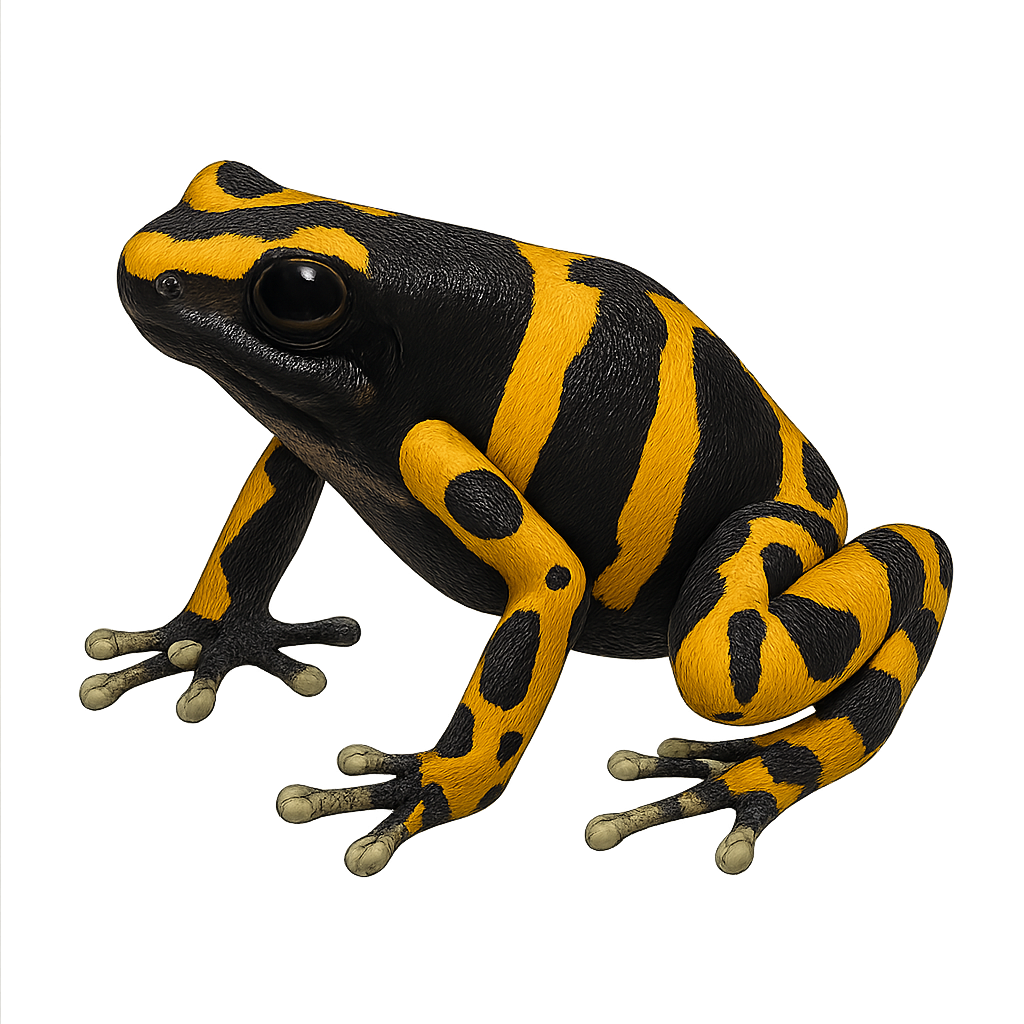Your wildlife photography guide.
Explore the yellow-banded poison dart frog in detail, study its behavior, prepare your shots.
Where to observe and photograph the yellow-banded poison dart frog in the wild
Learn where and when to spot the yellow-banded poison dart frog in the wild, how to identify the species based on distinctive features, and what natural environments it inhabits. The WildlifePhotographer app offers tailored photography tips that reflect the yellow-banded poison dart frog’s behavior, helping you capture better wildlife images. Explore the full species profile for key information including description, habitat, active periods, and approach techniques.
Yellow-banded Poison Dart Frog
Scientific name: Dendrobates leucomelas

IUCN Status: Least Concern
Family: DENDROBATIDAE
Group: Amphibians
Sensitivity to human approach: Suspicious
Minimum approach distance: 2 m
Reproduction period: April to May
Incubation: 21–23 jours
Births: April to May
Habitat:
Humid tropical forests, marshy areas
Activity period :
Primarily active during the day, with peak activity in the morning and late afternoon.
Identification and description:
The Yellow-banded Poison Dart Frog, or Dendrobates leucomelas, is a small, vividly colored frog native to the humid tropical forests of Venezuela, Guyana, and Brazil. It is easily recognizable by its bright yellow bands contrasting with its black body. This coloration serves as a warning to potential predators of its toxicity. Measuring about 3 to 4 cm in length, this species is diurnal and primarily feeds on small insects. It plays a crucial role in the ecosystem by regulating insect populations. Although its skin is toxic, it is prized by terrarium enthusiasts for its striking colors and fascinating behavior.
Recommended lens:
Macro – adjust based on distance, desired framing (portrait or habitat), and approach conditions.
Photography tips:
To photograph the Yellow-banded Poison Dart Frog, use a macro lens to capture the details of its colorful skin. Natural light is ideal to highlight its vivid colors, so try to shoot during the day when light is abundant. Be patient and wait for the frog to move naturally to get dynamic shots. Avoid using flash as it might disturb the animal. A tripod can be helpful to stabilize your camera and achieve sharp images.
The WildlifePhotographer App is coming soon!
Be the first to explore the best nature spots, track rutting seasons, log your observations, and observe more wildlife.
Already 1 432 wildlife lovers subscribed worldwide

